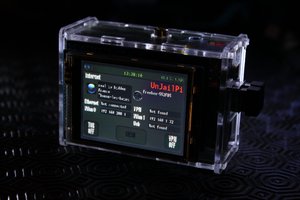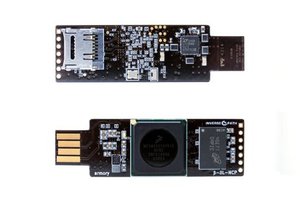The VPlugN is conceptually a simple idea, traffic comes in one side and goes out the other encrypted. If this is placed between the modem and router in a typical household, traffic from all the devices in that house would be covered. If it is pre-configured, it will be really easy to use.
Future Vision
The vision of this project is to create a product that can be sold for $20-$50 (hopefully) with VPN access built right in. I need some help with the network configuration and some web development for the settings page. If you would like to help, leave me a message or post in the comments.
The next step of this product is to use off the shelf boards, like the ODroid, or the Vocore2, add a couple of ports, setup the software, and 3D print a case. This would be good enough to show off in possibly a Kickstarter campaign. With some seed money, we can work on making this into a real product with custom PCBs, chips, and certifications.
Take a look at the pictures to see what I think this would look like. Tiny and inconspicuous, just enough to protect your network from the wilds of the internet...
Hackability
Although this will be an easy to use, small packaged product in the end doesn't mean it has to be un-hackable. I envision 3 tiers of use.
- Plug and Play: Just plug the device in and let it do it's thing. Easy for anyone to use.
- Web Settings: Adjust settings, install new certificates, allow certain services to bypass the VPN, and more all in a web site served by the device. This should still be easy to use, but slightly more advanced.
- Hack Away: All the code and configurations as well as the schematics will be open and available for anyone to use. If you want to build a VPlugN on hardware you have laying around, this will be possible. You can also re-purpose one of our future purpose built VPlugN boxes for anything you would like.
Hopefully this will give a future product plenty of life and reuse for anyone who knows what they are doing, but still be very useful to any network novices who just want to protect their privacy. Let me know if you can think of any other tiers that could be built into this thing.
 daniel.bryand
daniel.bryand
 Arcadia Labs
Arcadia Labs

 tdicola
tdicola
 Sammy Herring
Sammy Herring